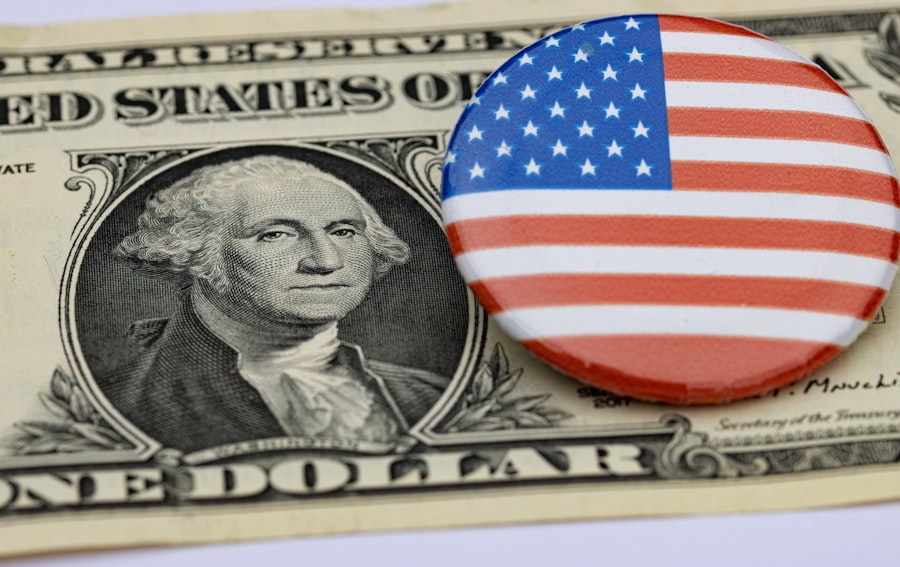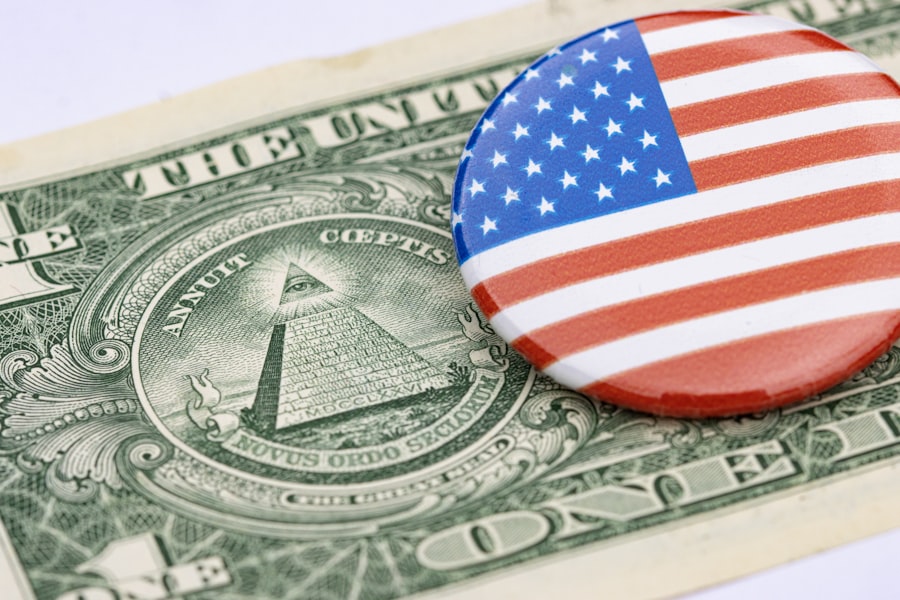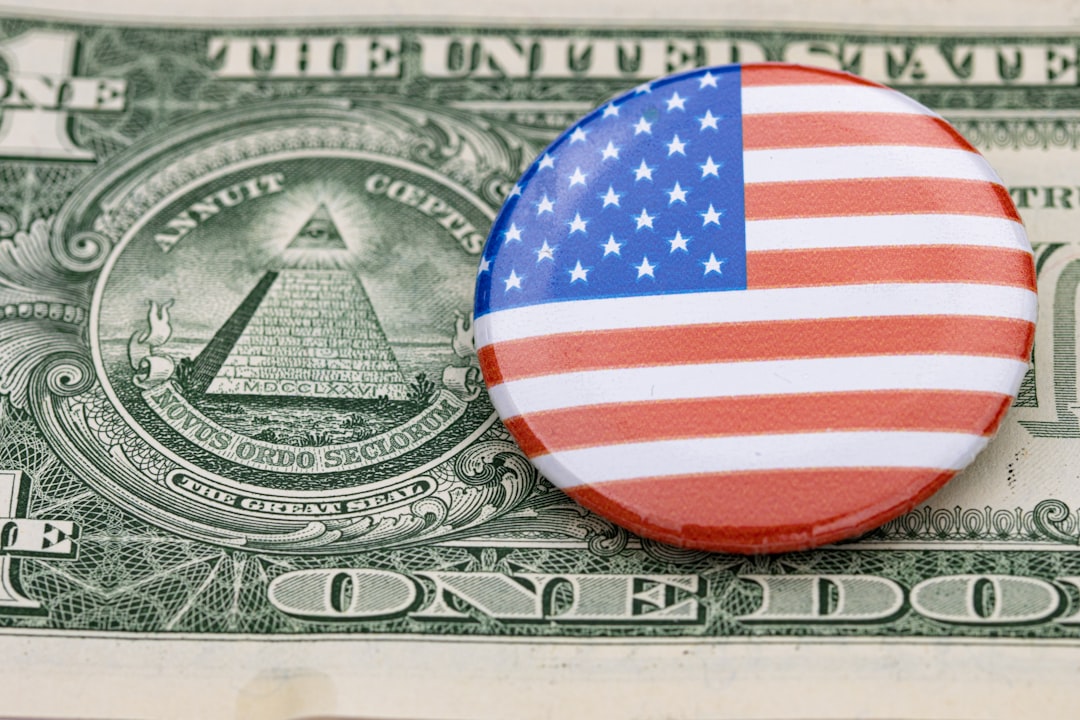As you navigate the complexities of the financial landscape, it’s crucial to grasp the potential ramifications of a dollar collapse. The U.S. dollar has long been the world’s primary reserve currency, and its stability is integral to global trade and economic health.
However, should the dollar experience a significant decline in value, the consequences could be profound. You might find that inflation skyrockets, leading to a decrease in purchasing power. Everyday essentials could become prohibitively expensive, and your savings may dwindle in value, leaving you feeling financially vulnerable.
Moreover, a dollar collapse could trigger widespread panic in financial markets. You may witness a surge in unemployment rates as businesses struggle to cope with rising costs and reduced consumer spending. The ripple effects could extend beyond borders, affecting economies worldwide.
Understanding these potential outcomes can help you prepare for the worst while also identifying opportunities that may arise in such turbulent times. By staying informed and proactive, you can better position yourself to weather any financial storm.
Key Takeaways
- A dollar collapse could have significant impact on global economy and individual finances
- Investing in tangible assets like gold and silver can provide a hedge against currency devaluation
- Diversifying portfolio with foreign currencies can help mitigate the impact of a dollar collapse
- Stocking up on essential goods and supplies can help protect against inflation and supply chain disruptions
- Real estate can be a valuable investment to hedge against inflation and currency devaluation
Investing in tangible assets such as gold and silver
In times of economic uncertainty, investing in tangible assets like gold and silver can serve as a reliable safeguard for your wealth. Precious metals have historically maintained their value, even when fiat currencies falter. By allocating a portion of your portfolio to these assets, you can create a buffer against inflation and currency devaluation.
You might consider purchasing physical gold or silver coins, bars, or even exchange-traded funds (ETFs) that track their prices. This diversification can provide you with peace of mind, knowing that you have a tangible asset that can retain value regardless of market fluctuations. Additionally, gold and silver can act as a hedge against geopolitical instability.
In an era where global tensions can escalate quickly, having these assets can offer you a sense of security. You may find that during times of crisis, demand for precious metals increases, driving up their prices. This potential for appreciation can enhance your overall financial strategy, allowing you to not only protect your wealth but also potentially grow it in uncertain times.
Diversifying your portfolio with foreign currencies

As you consider ways to safeguard your financial future, diversifying your portfolio with foreign currencies can be an effective strategy.
If the U.S. dollar loses value, other currencies may remain stable or even appreciate, providing you with a buffer against domestic economic turmoil. You might explore currencies from countries with strong economic fundamentals or those that are less susceptible to global market fluctuations. Investing in foreign currencies can also open up new opportunities for growth. Currency trading, or forex trading, allows you to capitalize on fluctuations in exchange rates. While this approach requires careful research and understanding of global markets, it can be a rewarding addition to your investment strategy. By diversifying into foreign currencies, you not only protect your assets but also position yourself to take advantage of potential gains in a rapidly changing financial landscape.
Stocking up on essential goods and supplies
| Category | Metrics |
|---|---|
| Food | Amount of non-perishable food items |
| Water | Gallons of water per person |
| Medicine | Supply of prescription and over-the-counter medications |
| Toiletries | Quantity of toilet paper, soap, and hygiene products |
| Cleaning Supplies | Stock of disinfectants, sanitizers, and cleaning products |
In preparation for a potential dollar collapse, stocking up on essential goods and supplies is a practical step you can take to ensure your well-being during uncertain times. As inflation rises and supply chains become strained, having a reserve of necessities can provide you with peace of mind. You might start by assessing your household’s needs—non-perishable food items, toiletries, medical supplies, and other essentials should be prioritized.
By creating a well-thought-out inventory, you can avoid the panic buying that often accompanies economic downturns. Moreover, having these supplies on hand can also serve as a form of self-sufficiency. In the event of significant economic disruption, you may find it challenging to access basic goods.
By preparing in advance, you not only protect yourself but also reduce reliance on external sources during crises. This proactive approach can empower you to navigate challenging circumstances with greater confidence and resilience.
Investing in real estate as a hedge against inflation
Real estate has long been considered a solid investment strategy, particularly as a hedge against inflation. As prices rise, so too does the value of property, making it an attractive option for preserving wealth during economic instability. By investing in real estate, you can create a tangible asset that not only appreciates over time but also generates rental income.
This dual benefit can provide you with financial security and cash flow during uncertain times. Additionally, real estate investments can offer tax advantages that further enhance their appeal. You might explore various types of properties—residential, commercial, or even vacation rentals—to diversify your real estate portfolio.
Each type comes with its own set of risks and rewards, so conducting thorough research is essential. By strategically investing in real estate, you position yourself to weather economic storms while potentially reaping significant long-term benefits.
Exploring alternative investment options such as cryptocurrencies

In recent years, cryptocurrencies have emerged as an alternative investment option that many individuals are exploring. As traditional financial systems face challenges, digital currencies like Bitcoin and Ethereum offer a decentralized means of storing value and conducting transactions. You may find that investing in cryptocurrencies provides an opportunity to diversify your portfolio further while tapping into the growing trend of digital finance.
However, it’s essential to approach cryptocurrency investments with caution. The market is known for its volatility, and prices can fluctuate dramatically within short periods. Educating yourself about blockchain technology and the specific cryptocurrencies you’re interested in is crucial before diving in.
By understanding the risks and potential rewards associated with this asset class, you can make informed decisions that align with your overall financial strategy.
Considering the impact on retirement savings and planning accordingly
A dollar collapse could have significant implications for your retirement savings and long-term financial planning. If inflation rises sharply or the value of your savings diminishes due to currency devaluation, your retirement plans may be jeopardized. It’s essential to reassess your retirement strategy regularly and consider how various economic scenarios could impact your savings goals.
You might explore options such as increasing contributions to retirement accounts or reallocating investments toward more stable assets. Additionally, diversifying your retirement portfolio can help mitigate risks associated with economic downturns. You may want to consider incorporating tangible assets like gold or real estate into your retirement strategy while also exploring alternative investments like cryptocurrencies.
By taking a proactive approach to your retirement planning, you can better position yourself for financial security in the face of potential challenges.
Protecting your assets with insurance and other risk management strategies
As you work to safeguard your financial future amidst potential economic instability, protecting your assets through insurance and risk management strategies is paramount. Adequate insurance coverage can shield you from unforeseen events that could threaten your wealth—be it property damage, health issues, or liability claims. You might consider reviewing your existing policies to ensure they align with your current needs and adequately cover potential risks.
In addition to insurance, implementing risk management strategies can further enhance your financial security. Diversifying your investments across various asset classes can help mitigate losses during market downturns. Establishing an emergency fund is another prudent step; having liquid cash available can provide you with flexibility during challenging times.
By taking these measures seriously, you create a robust safety net that allows you to navigate uncertainties with greater confidence.
Seeking professional financial advice and guidance
Navigating the complexities of financial planning during uncertain times can be daunting; seeking professional financial advice is often a wise decision. A qualified financial advisor can help you assess your current situation and develop a tailored strategy that aligns with your goals and risk tolerance. They can provide insights into market trends and investment opportunities that you may not have considered on your own.
Moreover, working with a professional allows you to stay informed about changes in regulations or economic conditions that could impact your financial strategy. They can help you adjust your portfolio as needed and ensure that you’re taking advantage of available resources to protect and grow your wealth. By collaborating with an expert, you empower yourself to make informed decisions that enhance your financial resilience.
Understanding the potential risks and opportunities of a dollar collapse
As you contemplate the possibility of a dollar collapse, it’s essential to recognize both the risks and opportunities that may arise from such an event. On one hand, the risks are significant—loss of purchasing power, increased unemployment rates, and market volatility could all pose challenges to your financial well-being. However, understanding these risks also allows you to identify potential opportunities for growth and investment.
For instance, during times of economic upheaval, certain sectors may thrive while others falter. You might find that industries related to essential goods or alternative energy sources experience growth as consumers shift their spending habits. By staying informed about market trends and being adaptable in your investment approach, you can position yourself to capitalize on emerging opportunities while mitigating risks associated with a dollar collapse.
Taking proactive steps to safeguard your financial future
Ultimately, taking proactive steps to safeguard your financial future is essential in today’s unpredictable economic climate. By understanding the potential impact of a dollar collapse and implementing strategies such as investing in tangible assets, diversifying your portfolio with foreign currencies, stocking up on essential goods, and seeking professional advice, you empower yourself to navigate uncertainties with confidence.
Remember that preparation is key—by taking action now rather than waiting for crises to unfold, you position yourself not only to survive but thrive in an ever-changing financial landscape.
As concerns about the potential collapse of the US dollar continue to circulate, many individuals are seeking guidance on how to safeguard their financial future. One strategy involves investing in tangible assets that are likely to retain value even if the dollar weakens. For those interested in exploring this topic further, an insightful article on what to buy before the US dollar collapses can be found on Real Lore and Order. This resource provides valuable advice on diversifying investments and securing assets. To read more about these strategies, visit the article on Real Lore and Order.
WATCH THIS! The 8 Assets You OWN But the Government CONTROLS (Dollar Collapse Survival)
FAQs
What is the US dollar collapse?
The US dollar collapse refers to a hypothetical scenario in which the value of the US dollar significantly decreases, leading to economic instability and potential financial crisis.
What are some signs that the US dollar may collapse?
Signs that the US dollar may be at risk of collapsing include high inflation, increasing national debt, a declining trade balance, and a loss of confidence in the currency by international investors.
What should I buy before the US dollar collapses?
Before a potential US dollar collapse, it may be wise to consider purchasing assets such as gold, silver, real estate, and other commodities that historically hold their value during times of economic uncertainty.
Is it advisable to invest in foreign currencies before a US dollar collapse?
Investing in foreign currencies can be a way to diversify your holdings and protect against the potential devaluation of the US dollar. However, it is important to carefully research and consider the risks involved in foreign currency investments.
What are some other steps to take before a US dollar collapse?
In addition to purchasing tangible assets and considering foreign currency investments, it may be prudent to reduce debt, build an emergency fund, and consider alternative forms of income such as investing in stocks, bonds, or other financial instruments.
